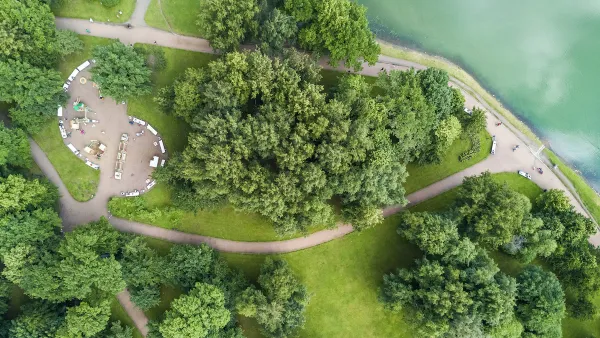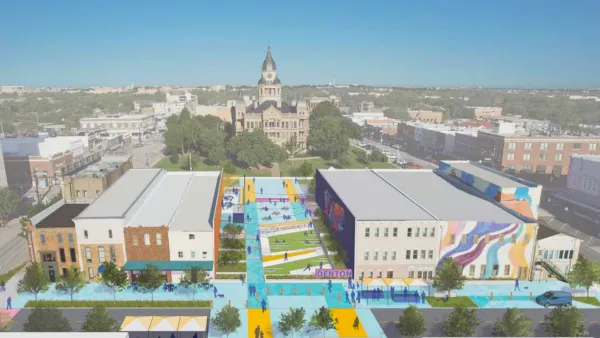Over 20 years, the TKF Foundation has funded the creation of dozens of “green refuges from the stresses of modern life”. With $4.5 million in funding for six new projects, they’re out to prove the physical and psychological benefits of such spaces.
In an increasingly urbanized world, we are bound to find a better connection with ourselves in nature than with our WiFi networks. At least that’s the idea that drives Tom Stoner, founder of the TKF Foundation, who along with his wife and colleagues have funded dozens of restorative green spaces throughout the Washington-Baltimore area via their Nature Sacred program, reports Sarah Goodyear.
The foundation recently announced $4.5 million in new grants for six projects, where “scientists from a number of different disciplines – neuroscience, immunology, genomics, and others – will work to study the effects of specially designed spaces on people living in an urban environment or who are otherwise under stress.”
Grant winners will study the impacts of a range of projects: from a landscaped refuge at a Maryland hospital to a verdant retreat in Brooklyn's Naval Cemetery, and a healing environ for tornado-devastated Joplin, Missouri.
Stoner's take on the word “sacred” is not meant to be religious, Goodyear adds. Rather, he suggests "[i]t’s a sense that these spaces are important, intimate. It’s about our individual, personal relationship with nature."
“[W]ith the development of better tools to assess stress levels and neurological response to stimuli, the time has come to measure that ineffable relationship,” Goodyear says. “Stoner thinks that quantitative proof of the health benefits of well-designed green space could go a long way toward encouraging better funding of the kind of places that we need to maintain our physical and mental health in a rapidly urbanizing world.”
FULL STORY: Green Spaces That Actually Calm the Mind and Body

Analysis: Cybertruck Fatality Rate Far Exceeds That of Ford Pinto
The Tesla Cybertruck was recalled seven times last year.

National Parks Layoffs Will Cause Communities to Lose Billions
Thousands of essential park workers were laid off this week, just before the busy spring break season.

Retro-silient?: America’s First “Eco-burb,” The Woodlands Turns 50
A master-planned community north of Houston offers lessons on green infrastructure and resilient design, but falls short of its founder’s lofty affordability and walkability goals.

Test News Post 1
This is a summary

Analysis: Cybertruck Fatality Rate Far Exceeds That of Ford Pinto
The Tesla Cybertruck was recalled seven times last year.

Test News Headline 46
Test for the image on the front page.
Urban Design for Planners 1: Software Tools
This six-course series explores essential urban design concepts using open source software and equips planners with the tools they need to participate fully in the urban design process.
Planning for Universal Design
Learn the tools for implementing Universal Design in planning regulations.
EMC Planning Group, Inc.
Planetizen
Planetizen
Mpact (formerly Rail~Volution)
Great Falls Development Authority, Inc.
HUDs Office of Policy Development and Research
NYU Wagner Graduate School of Public Service




























